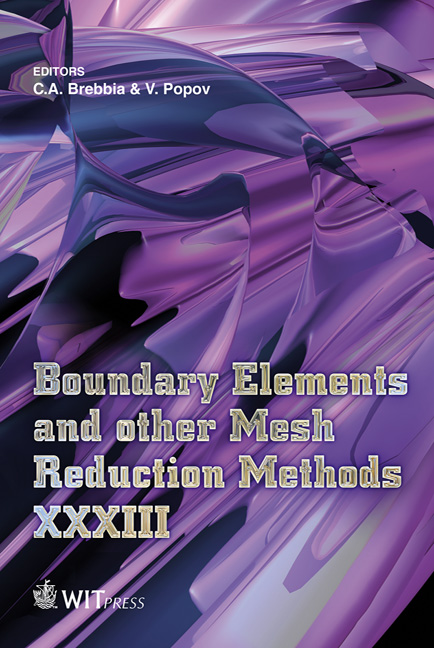Forced Vibrations Of Tanks Partially Filled With Liquid Under Seismic Load
Price
Free (open access)
Transaction
Volume
52
Pages
12
Page Range
285 - 296
Published
2011
Size
683 kb
Paper DOI
10.2495/BE110251
Copyright
WIT Press
Author(s)
V. Gnitko, U. Marchenko, V. Naumenko & E. Strelnikova
Abstract
Cylindrical tanks partially filled with liquid are the most general type of reservoirs for oil and other chemical-dangerous agent storage. Destruction of such tanks under seismic or impulsive load can lead to negative ecological consequences. The analysis method of dynamic behavior of cylindrical tanks partially filled with liquid that are under short-time impulsive load is under consideration. The method relies on reducing the problem of determining the fluid pressure to the system of singular integral equations. The coupled problem is solved using combination BEM and FEM. Differential equations of transient problem are solved numerically by Runge-Kutta method of 4th and 5th order. Numerical investigations of forced vibrations of the cylindrical tank filled with the incompressible fluid under seismic load have been carried out. Keywords: forced vibrations, fluid-structure interaction, seismic load, boundary and finite element methods. 1 Introduction Practicing engineers face many issues and challenges on the design and seismic evaluation of liquid storage tanks [1–3]. Liquid storage tanks are important components of lifeline and industrial facilities. Ground-supported cylindrical tanks are used to store a variety of liquids: water for drinking and firefighting, crude oil, wine, liquefied natural gas (LNG), etc. Failure of tanks, following destructive earthquakes, may lead to environmental hazard, loss of valuable contents, and disruption of fire-fighting effort. Inadequately designed or detailed tanks have suffered extensive damage in past earthquakes and have resulted in disastrous effects. Earthquake damage to steel tanks can take several forms.
Keywords
forced vibrations, fluid-structure interaction, seismic load, boundary and finite element methods





